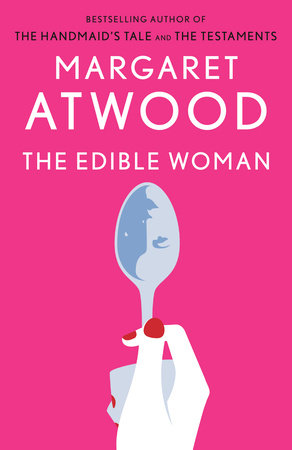The Edible Woman Reader’s Guide
By Margaret Atwood


1. Do you see a relationship between the kind of work Marian does in consumer research with the particular way her life begins to disintegrate?
2. Peter is afraid of being captured by a woman, of losing his freedom; Marian begins to feel hunted, caught in his gaze; eventually she even confuses his camera with a gun. In what ways can all the characters seem at once to be hunter, then predator, master then slave, subject then object?
3. Two parties take place in the book, the office party and the engagement party. Discuss what these parties do for the structure and development of the novel.
4. Sexual identity lies at the heart of much of the story. Discuss the role Marian’s roommate Ainsley, her friend Claire, and finally the "office Virgins" play in helping define Marian’s dilemma. Discuss the men: Why is Marian drawn to Duncan? Contrast him with Peter.
5. The novel is narrated in first person in parts one and three, third person in part two. What is the effect on the reader of the change in voice?
6. Margaret Atwood has described The Edible Woman, her first novel, as an "anti-comedy," with themes many now see as proto-feminist. Give examples of Atwood’s clever use of food images throughout the book.
7. First Marian drops meat from her diet, then, eggs, vegetables, even pumpkin seeds. Can you point to the incidents that precede each elimination from her diet? How does her lack of appetite compare or contrast with Duncan’s unnatural thinness, his stated desire to become "an amoebae?"
8. What is the meaning of the cake Marian serves Peter at the novel’s end? What is the significance of her eating the cake?
9. Margaret Atwood is a writer who often plays with fairy tale images in her work. "The Robber Bridegroom" (which she much later turns on its head with The Robber Bride) was likely an inspiration for The Edible Woman: the old crone warns the bride-to-be " . . . the only marriage you’ll celebrate will be with death . . . When they have you in their power they’ll chop you up in pieces . . . then they’ll cook you and eat you, because they are cannibals." What images of cannibalism does Atwood use? Do you see traces of other fairy tales in this novel?
10. At the time The Edible Woman was written in 1965 food, eating and weight issues had yet attracted wide attention as feminist concerns. Three decades later, in The Beauty Myth, author Naomi Wolf observes that the obsession with thinness began to become a serious national problem for women America around 1920, coinciding with women’s right to vote; studies indicate that today nearly half of American young women have had at one time or other had an eating disorder. What are the symbolic meanings of food, and why does it become the focus for so much anxiety?
Just for joining you’ll get personalized recommendations on your dashboard daily and features only for members.
Find Out More Join Now Sign In